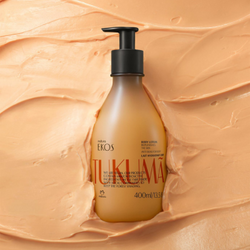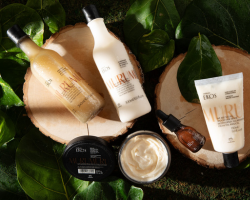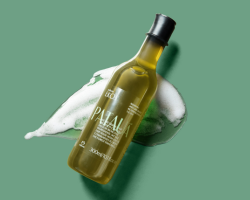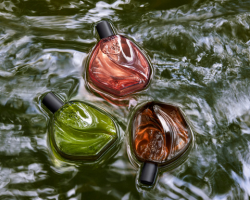beauty
Hair Schedule: What It Is And How To Follow It
Find out how to make a hair schedule and adopt these personalized care treatments in accordance with the needs of your hair.
- By Natura Team
Have you ever heard of a hair schedule? It is nothing more than a treatment fully focused on your hair and its needs, or in other words: a specific care program for what your hair needs at a determined moment.
Normally, the process lasts one month and comprises three stages that vary according to what the moment - and hair - require: moisturizing, nourishment, and reconstruction. If your hair is very porous, for example, it will require more reconstruction phases. If it is just dry, it will be necessary to include more hydration processes.
Before making up your schedule, let’s have look at each stage and see how it works. This will ensure that you are following the ideal schedule for your hair type. Check it out!
The 3 stages in the hair schedule
Understand everything about each stage of the schedule to see what treatment you will need to adopt to care for your hair:
1. Hydration
The focus in this stage is on restoring water to your hair. If your hair looks brittle, dried out and dull, it needs to be hydrated. A mask that will meet the needs of the hair, restoring its water content, glossiness, and softness is more suitable for this stage.
An excellent option is our Pautauá Strengthening Anti-Breakage Hair Mask. Ideal for this moment and made of ingredients aimed specifically at hydrating the hair, it is practical and quick to use.
2. Nutrition
If your hair is brittle, dry, dull, and, in particular, shapeless, it probably needs nourishment. Responsible for restoring the hair’s natural oiliness, this stage, also called humectation, results in numerous benefits, including improved curl definition.
For this stage, it is a good idea to use pure oil and vegetable-based masks. Lumina Curly Hair Nourishing Mask has murumuru butter in its composition to nourish and model your curls. Perfect, isn’t it?
Another tip is to finalize the ends with Patauá Hair Anti-Breakage Re-Strengthening Oil, from Ekos, a repair oil that makes dry hair stronger, easier to control, and with less frizz and fewer split ends.
3. Reconstruction
The purpose of this stage is to restore the mass of thin, fragile hair that has split or elastic ends. To solve this problem, try Murumuru Restoring Mask, whose formula contains exclusive Amazonian murumuru butter, which penetrates inside the hair fiber and restores the health of the deeper layers of hair strands.
For an even stronger and more powerful treatment, there is the Murumuru Anti-Damage Conditioner. It is great for treating hair, repairing damaged strands, restoring, and improving elasticity.
How to elaborate your hair schedule
Now that you are familiar with the stages of the schedule, it is time to look at two steps that are essential for the success of this treatment aimed at saving your hair! Look:
1st step: get to know your hair
Before preparing your schedule, you must understand what your hair is asking for. Brittle, dried out and lifeless hair requires more hydration stages.
While hair that is dull, tangled and frizzy will require more nutrition. And hair that has recently been submitted to chemical aggression and is brittle, porous, and lacking in density will need an intensified reconstruction.
2nd step: define a monthly treatment agenda
Each type of treatment will complement the others. Ideally, you should start with hydration and employ more stages of the type of treatment your hair requires most. But remember: at the reconstruction stage, you need to be more cautious. Hair that has suffered little damage should be submitted to this only once a month.
While badly damaged strands should undergo reconstruction at most every fortnight. More than this will make the hair very brittle and could lead to breakage - the problem the treatment is supposed to solve.
Hydration & Nutrition: Pautauá Strengthening Anti-Breakage Hair Mask
Reconstruction: Patauá Hair Anti-Breakage Re-Strengthening Oil and Murumuru Anti-Damage Conditioner
Schedule for dull hair
Below is an example of a basic schedule for hair that requires more hydration:
|
Week 1 |
Week 2 |
Week 3 |
Week 4 |
|
Hydration |
Hydration |
Nutrition |
Hydration |
|
Nutrition |
Nutrition |
Hydration |
Nutrition |
|
Reconstruction |
Hydration |
Nutrition |
Hydration |
In this case, an interval of at least 48 hours between each treatment is fundamental so that the active ingredients do not mix with each other on the strands.
Schedule for dry hair
When your hair looks dry, gets tangled easily and the curls are not defined, you should invest in nutrition. There follows an example of a schedule for hair that requires more nutrition:
|
Week 1 |
Week 2 |
Week 3 |
Week 4 |
|
Hydration |
Nutrition |
Nutrition |
Nutrition |
|
Nutrition |
Hydration |
Hydration |
Hydration |
|
Hydration |
Reconstruction |
Nutrition |
Nutrition |
If you follow this schedule in a short while you will begin to see the results. So organize your schedule and shortly you will have hair that is bouncy and glossy with well-defined curls.
Schedule for damaged hair
After aggressive chemical processes, such as discoloring and straightening, the hair should be submitted to reconstruction to replenish the mass lost in the treatments. See our example of a schedule for this case:
|
Week 1 |
Week 2 |
Week 3 |
Week 4 |
|
Hydration |
Nutrition |
Hydration |
Nutrition |
|
Nutrition |
Hydration |
Nutrition |
Hydration |
|
Hydration |
Reconstruction |
Hydration |
Reconstruction |
Tips for elaborating a hair schedule at home
After setting up and following the schedule that best meets the needs of your hair, you should pay attention and not overdo it: when you have obtained the improvements you wanted, go back to your daily routine and resort to the schedule only when new needs arise. Here are some other tips to help with this process:
- Do not overdo the quantity of product. It may seem like a quick solution to recuperate dry hair, but the hair strands are only able to absorb a certain amount of product. Beyond this, the excessive product could lead to a rebound effect.
- Always space treatments out with intervals of 48 hours. If you wash your hair every day, alternate the days for hydration, nutrition, or reconstruction with regular washing, using just shampoo and conditioner.
- Doubts about the state your hair is in? Start with the classic hair schedule. It has well-organized stages and you will be better able to analyze the results, perceiving your real needs at each stage.
Investing in a good hair schedule is essential if your hair is in bad condition. What is best of all is how easy and convenient these treatments are. You can do them without even leaving the house.
So, are you ready to restore the glory of your hair and leave it looking just the way you like? If you liked these tips, sign up to receive our newsletter with hair care tips.















